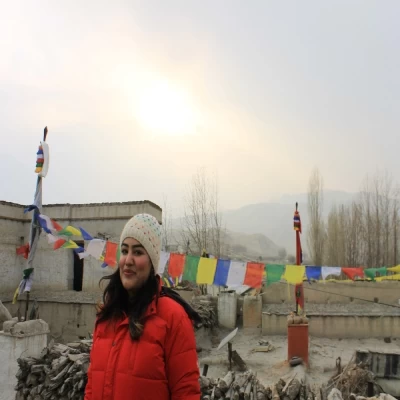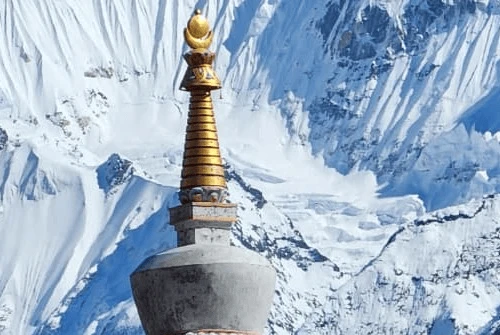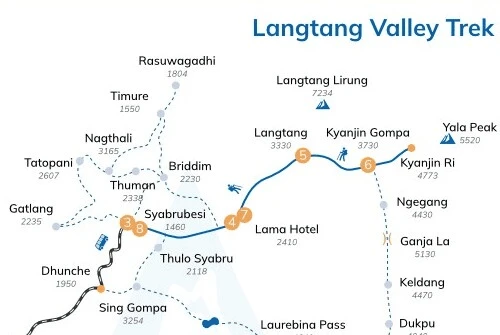The Mardi Himal Trek, nestled in the heart of Nepal’s Annapurna region, has swiftly become one of the most beautiful treks for adventurers seeking a pristine and less crowded Himalayan experience. As with any trek in Nepal, understanding the cost of the Mardi Himal Trek is essential for planning a hassle-free journey. From permits to gear rental, from guide services to food and lodging, we break down every detail of the Mardi Himal trek cost to help you prepare for the adventure of a lifetime.
Trekking Permits Required and Their Costs
Before beginning the Mardi Himal Trek, trekkers must obtain two essential permits:
Annapurna Conservation Area Permit (ACAP):
Cost for SAARC nationals: NPR 1,000
Cost for other nationals: NPR 3,000
Trekkers’ Information Management System (TIMS) Card:
Cost for individual trekkers: NPR 2,000
Cost when trekking with a guide/agency: NPR 1,000
These permits are mandatory and are checked at various points along the trail. They can be acquired in Kathmandu or Pokhara through the Nepal Tourism Board offices.
Guide and Porter Cost
Hiring a guide and/or porter is not compulsory, but it is highly recommended for safety and a richer cultural experience.
Professional Trekking Guide:
Daily rate: USD 25–35
Inclusions: navigation, first aid, knowledge of culture, and language support
Porter (for carrying luggage up to 20–25 kg):
Daily rate: USD 18–25
Helpful for reducing physical strain and enhancing the trekking experience
Some guides double as porters, offering a cost-effective option at around USD 30–40 per day.
Transportation Costs
The Mardi Himal Trek typically starts from Kande, about an hour's drive from Pokhara.
Bus from Kathmandu to Pokhara:
Tourist bus: USD 8–12
Deluxe or VIP bus: USD 20–25
Private Car or Jeep (Kathmandu to Pokhara):
Cost: USD 100–150, depending on vehicle type and size
Taxi or Local Bus from Pokhara to Kande/Phedi:
Local bus: NPR 200–300
Taxi: USD 15–20
If you're short on time, domestic flights between Kathmandu and Pokhara are available for USD 80–120 one way.
Accommodation Costs Along the Trail
The Mardi Himal Trek offers teahouse-style accommodation, where trekkers stay in local lodges built along the trail.
Lower altitudes (Kande to Forest Camp):
Price: USD 6–10 per night
Higher altitudes (High Camp to Mardi Base Camp):
Price: USD 8–15 per night, due to difficulty in transportation and logistics
Rooms typically offer basic twin beds, shared toilets, and minimal heating. Carrying a sleeping bag is advisable in colder months.
Food and Drink Prices on the Trail
The higher you go, the more expensive food and drinks become. Meals are basic but filling.
Dal Bhat (traditional Nepali meal): Cost: USD 4–7, unlimited servings in most teahouses
Breakfast items (toast, porridge, eggs): Cost: USD 3–6
Snacks (noodles, fried rice, momos): Cost: USD 4–7
Drinking Water:
Bottled water: USD 1–3 per liter
Safe drinking water stations or boiled water: USD 0.5–1
Using a water purification tablet or filter can significantly reduce costs and environmental impact.
Trekking Gear and Rental Costs
If you're not bringing your equipment, Pokhara and Kathmandu offer numerous gear rental shops.
Sleeping bag: USD 1–2 per day
Down jacket: USD 1–2 per day
Trekking poles, backpacks, crampons: USD 1 per item per day
Full gear rental package: USD 10–15 per day
Buying brand-new trekking gear in Thamel or Lakeside is also an option, but expect higher costs for branded products.
Travel Insurance for Trekking in Nepal
Trekking without insurance is highly discouraged, especially in the Himalayas, where altitude sickness can be fatal.
Comprehensive trekking insurance (with 4,500m altitude coverage):
Average cost: USD 100–150 for 30 days
Make sure to choose the best travel insurance that covers emergency helicopter evacuation, trip cancellations, and medical expenses.
Miscellaneous Expenses to Consider
Charging electronic devices: Cost: USD 2–3 per charge at higher altitudes
Hot showers: Cost: USD 2–5, depending on location
Wi-Fi: Cost: USD 2–4 per hour, may not be available in remote areas
Tips for guides/porters: Suggested: 10–15% of their total fee
Souvenirs and donations to local monasteries: Budget: USD 10–30
Sample Budget for Mardi Himal Trek (7 Days)
Expense Category | Budget Trekker (USD) | Mid-range Trekker (USD) |
Permits | 50 | 50 |
Transport | 25 | 100 |
Guide/Porter | 0 (self-guided) | 210 (with guide) |
Accommodation | 50 | 90 |
Food & Drinks | 100 | 150 |
Gear Rental | 50 | 70 |
Insurance | 120 | 120 |
Miscellaneous | 30 | 50 |
Total Estimated Cost | USD 425 | USD 840 |
Cost-Saving Tips for the Mardi Himal Trek
Travel during off-season (June–August, January–February) for discounted accommodation rates.
Bring your own snacks, water purification tools, and power banks.
Trek in a group to split the cost of guides and porters.
Book directly with local agencies instead of international tour companies.
Conclusion
The cost of the Mardi Himal Trek can vary widely depending on your travel style and preferences. Whether you’re a budget backpacker or seeking a guided mid-range experience, Mardi Himal offers stunning views, rich culture, and a rewarding adventure without breaking the bank. By planning wisely and understanding the breakdown of expenses, you can enjoy this off-the-beaten-path gem of the Annapurna region with peace of mind and a clear budget.




